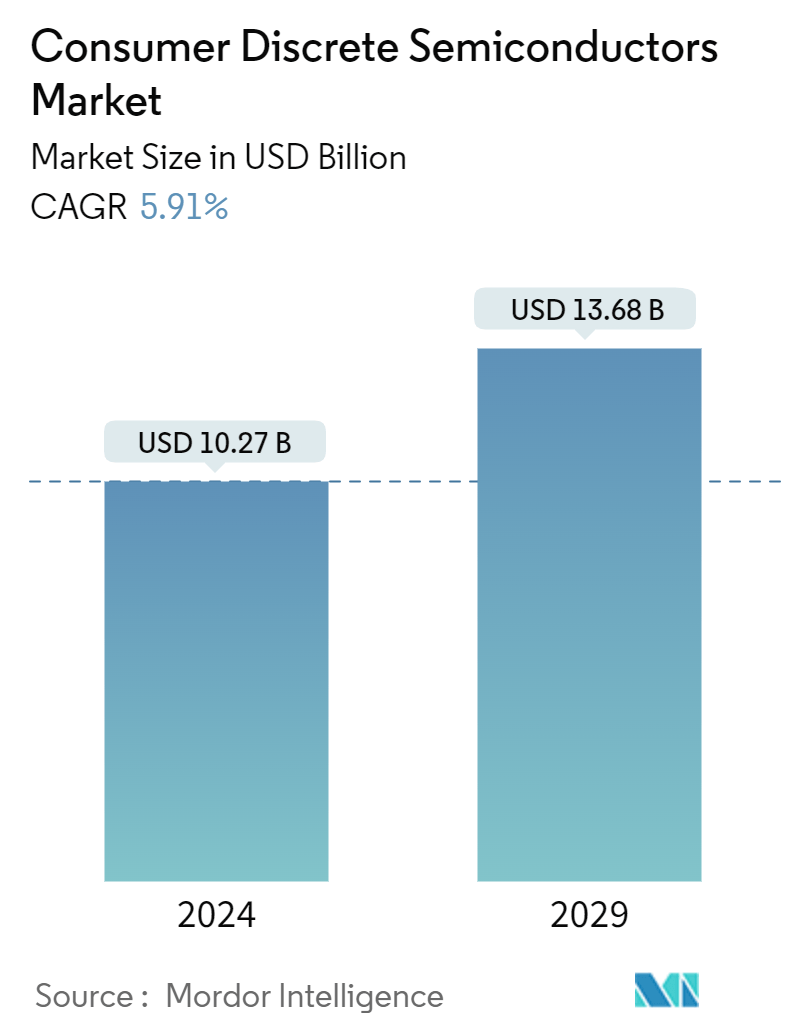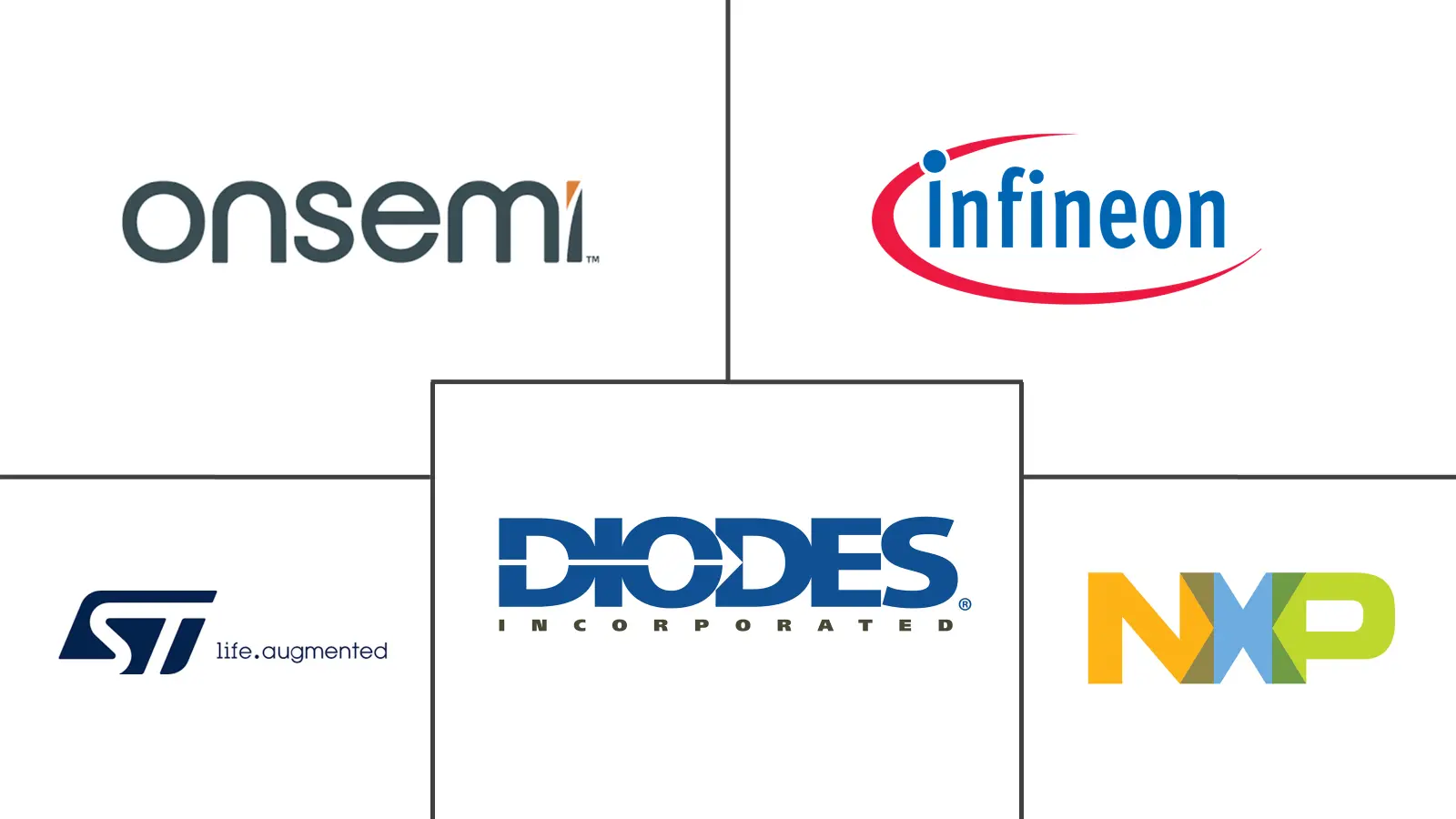Market Size of Consumer Discrete Semiconductors Industry

| Study Period | 2019 - 2029 |
| Market Size (2024) | USD 10.27 Billion |
| Market Size (2029) | USD 13.68 Billion |
| CAGR (2024 - 2029) | 5.91 % |
| Fastest Growing Market | Asia Pacific |
| Largest Market | Asia Pacific |
Major Players*Disclaimer: Major Players sorted in no particular order |
Consumer Discrete Semiconductors Market Analysis
The Consumer Discrete Semiconductors Market size is estimated at USD 10.27 billion in 2024, and is expected to reach USD 13.68 billion by 2029, growing at a CAGR of 5.91% during the forecast period (2024-2029).
- The increasing popularity of smartphones, tablets, laptops, wearables, and other smart devices boosts the demand for discrete semiconductors, which are essential for their functionality. As consumer electronics become smaller and more portable, they require compact and efficient discrete semiconductors to manage power and signal processing effectively.
- Discrete semiconductors in consumer electronics are used to oversee power management, signal processing, and device protection. These components are integral to various devices, from power supplies and audio equipment to mobile phones. For instance, in rectifiers, transistors and diodes are instrumental in converting AC to DC power. Additionally, voltage regulators ensure a consistent output, and switching power supplies boost energy efficiency. Transistors enhance sound and image signals, and diodes shield circuits from voltage spikes, thereby bolstering the longevity and reliability of electronic gadgets.
- Discrete power semiconductors, such as MOSFETs and IGBTs, are found in consumer electronics, including smartphones, laptops, and PCs. The strong demand for these products is one of the key drivers for the market.
- Discrete semiconductors ensure the functionality, performance, and longevity of a wide range of devices within the fast-moving consumer electronics sector. These components are essential for facilitating quick data processing, efficient power management, precise voltage regulation, and sophisticated touch-sensing features in products such as mobile phones, laptops, televisions, and home appliances. For instance, MOSFETs find widespread applications in consumer electronics. Some applications include reverse battery protection, switching power from different sources such as an AC adapter and batteries, and turning off loads such as backlighting when unnecessary.
- The surge in 5G technology investments is leading to a simultaneous increase in the demand for 5G-capable smartphones. The rise in smartphone usage, driven by population growth, has been a key factor supported by lower prices and enhanced features, which, in turn, are elevating smartphone ownership rates. As per BankMyCell, it is projected that by 2023, the global mobile phone user count will reach 6.92 billion, accounting for 86.29% of the world's population possessing a mobile device.
- The manufacturing of discrete semiconductors involves complex processes and high capital investment. Fluctuations in raw material prices, particularly for silicon and other essential components, can lead to increased production expenses. This can make it difficult for manufacturers to maintain competitive pricing, especially in a market where consumers are increasingly price-sensitive.
- Geopolitical challenges, including the Russian invasion of Ukraine, China-US competition, elections, and the war in Israel, significantly impact the global supply chain, especially critical raw materials vital for traditional industries, defense, high-tech sectors, aerospace, and green energy. The Russia-Ukraine war and economic slowdown caused significant disruption in the semiconductor industry. The increased inflation and interest rates reduced consumer spending, hampered the industry's demand, and led to slow growth in the discrete semiconductor market.


